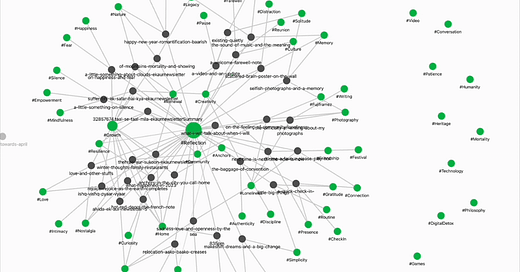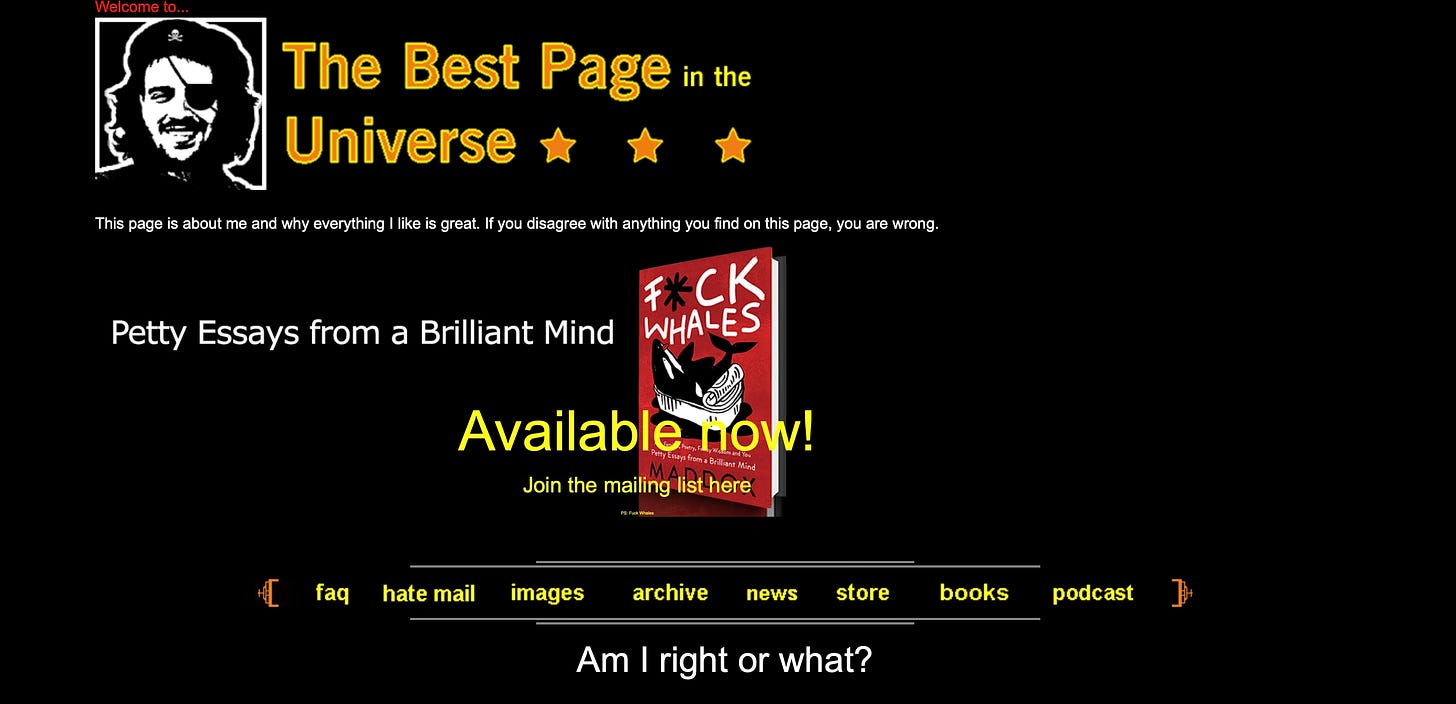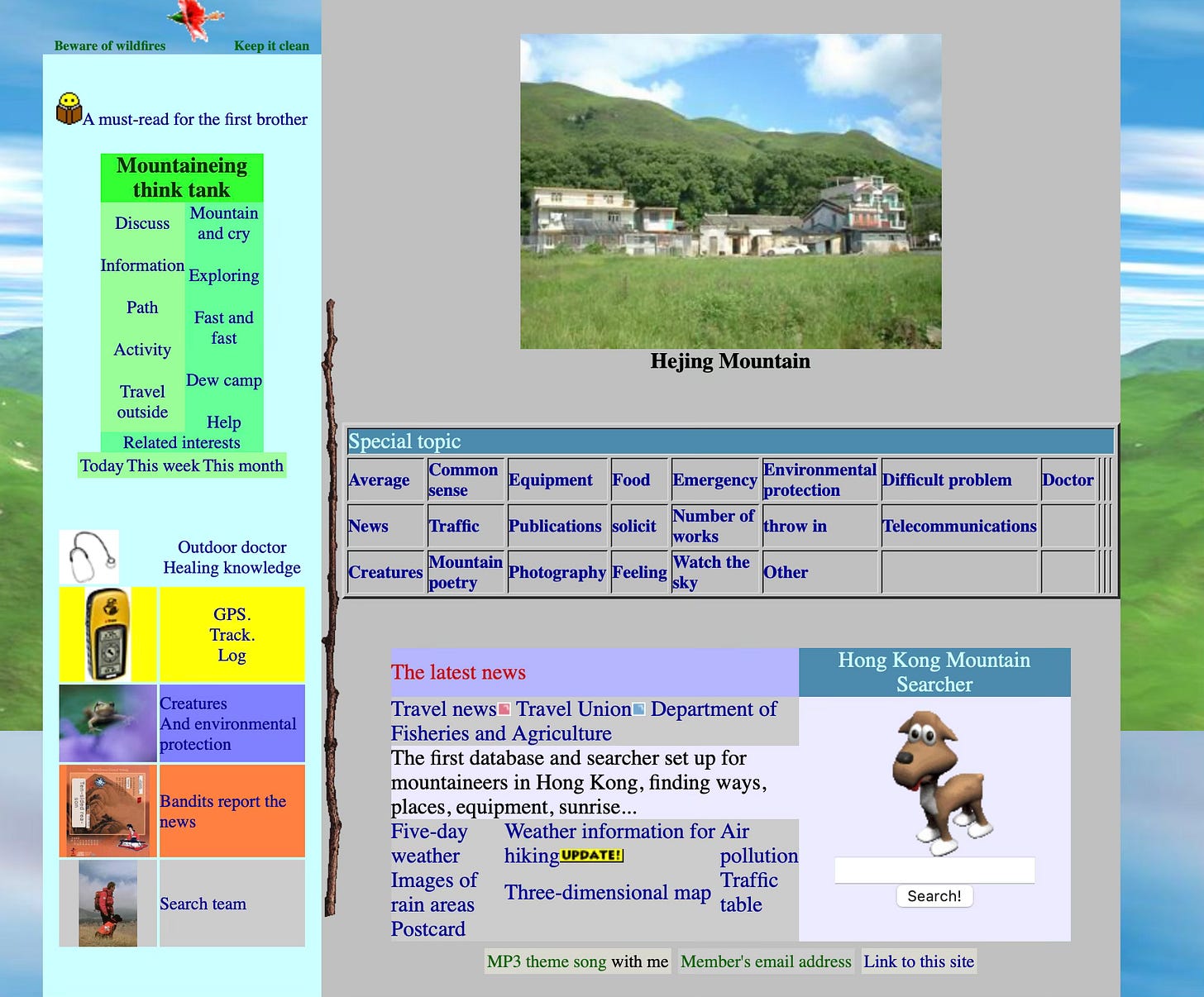In the 1950s, Niklas Luhmann developed the Zettelkasten method for academic research. I bet he did not know that it would change the way I think in 2025. During his lifetime, he published more than 50 books and 400 academic papers. For him, the method was a way to organize his thoughts over the years, allowing him to easily retrieve and interlink ideas when he wanted to write. Simply put, the Zettelkasten method is an efficient way to take notes. It helps you create a web of knowledge that can be accessed in a non-linear fashion.
I started writing on Substack in November 2020 for two reasons: to cope with the madness of the first half of 2020, and to practice writing—especially in public.
In nearly five years of writing publicly on Substack, I have reaped many benefits promised by this practice. Mainly, it was the ability to avoid confirmation bias—the tendency to favor information that confirms our preexisting beliefs while dismissing or overlooking contradictory evidence.
Writing in public created a strong feedback loop, enabling me to revise my thinking quickly rather than cementing earlier, flawed opinions. This approach also led me to meet and interact with like-minded individuals who share my perspective. This concept of public writing as a means to attract like-minded individuals is exceptionally explained in a post by Henrik Karlsson titled
Platforms like Substack facilitate the publishing of polished ideas in a chronological format, keeping all your work in one accessible place. However, over the past year, I have often wondered about the evolution of these ideas: How were they formed in my mind, and what led them to become posts here? For example, consider the idea of connection. I have written about the feeling of connection here, here and here and also here. I can easily trace my perspective on connection from 2022 to now. This process allowed me to create a thought map that illustrates how my views have evolved over the past four years, painting a picture of who I once was to who I am today.
This is where cultivating digital gardens come into play.
To put it simply, a Digital Garden is a space where you nurture your ideas—revisiting and refining them over time until they fully develop into well-rounded opinions. One might initially think of a Digital Garden as a blog, but that is not accurate. A blog, like the one on Substack, is organized chronologically rather than as an interconnected network. While hyperlinks serve as signposts directing you to specific content, a Digital Garden invites you to wander freely, much like the charm of the early internet. Back then, webpages weren't built on platforms like WordPress or Wix templates; they were unique, unpolished expressions of individual creativity, crafted with care and curiosity. Think back to the last time you truly surfed the web—it might have been a while.
A Digital Garden is a space where you can take a deep dive into ones thoughts. In this Information Age, we are constantly bombarded with, well, information, and we cannot recall everything are learning. Keeping your ideas in an easily accessible place can instantly improve your writing by preventing you from simply repeating what you said years ago. A Digital Garden is also a place for curious people who want to understand how a thought develops into an opinion. These sites (links provided) offer a glimpse into the minds of individuals actively building their “second brain.”
Getting laid off this past Friday pushed me to consolidate all the thoughts I had been storing, both publicly and privately, into one central location. This was my immediate response to losing my job after five long years at the company. I sat down and began writing concise notes for each of my Substack posts over the years, with the help of LLMs. After finishing each 150-word note, I tagged the post with a hashtag that struck a balance between being too broad and too specific—avoiding tags like #Life or #PrimeLens in favor of ones like #Connection, #Reflections, and #Photography. I also customized ChatGPT to mimic my note-taking style. I then fed it PDFs of my Substack articles, refining each one until the notes perfectly captured the original intent of the article.
I used an app called Obsidian to organize these notes in one place. As a visual thinker, I loved how the app displayed the evolution of my ideas in an interconnected web of graphs. It was fascinating to see my thought process evolve in real time. Here's an example:
The advantage of using Obsidian is that if, at some point, I want some of these notes to be public, I can easily do so with the Obsidian Public plugin. However, I'm not sure if I'll use that method to publish these notes; I'm leaning towards creating a simple page on my website, like my friend Sindhu has done for her digital garden.
How is this going to help in future?
I want to trace how I have learned about various topics over the years in a non-linear fashion, allowing me to accurately reflect on how my thoughts have translated into actions. This process feels like a form of self-care. We are surrounded by unstructured information, and the internet is getting increasingly filled with generative content. As a citizen of the World Wide Web, I feel it is my duty to dedicate at least one page to my own knowledge and learning.
Come, join me.
Some digital gardens I love visiting:-
Sindhu’s
Tom Critchlow
Andy's Working Notes
http://bactra.org/notebooks/
https://intwominds.blog
I suddenly have a lot of free time now which means I am going to be creating things full-time. So expect more posts your way in the coming weeks/months.
love,
tijbed.









Addicted to it. Thank you for introducing this Gem of an app. After Initial struggle, have finally reached somewhere.
Also love the Idea of Voice over, Listening to it while I am working on something else.
1. This is the 3rd or 4th time in this week that I am hearing about the Zettelkasten method, and I feel like the universe may be telling me something.
2. I watched the video of your obsidian screen so many times over, pausing it in between to read more closely as you hovered over specific nodes. But then I had to watch it again without pausing because I didn't like pausing the sound of the birds.
3. I think I would love to explore with obsidian now - is the 150 word a limit you set for yourself, or one imposed by the platform? Because right now, I have all my writing in a notion database (which I keep meaning to publish but never quite approve of the quality). But I'm curious to see these 'nodes' in my own thought process.
4. Thank you for this - I'm so inspired! Can't wait to read what you will write next!